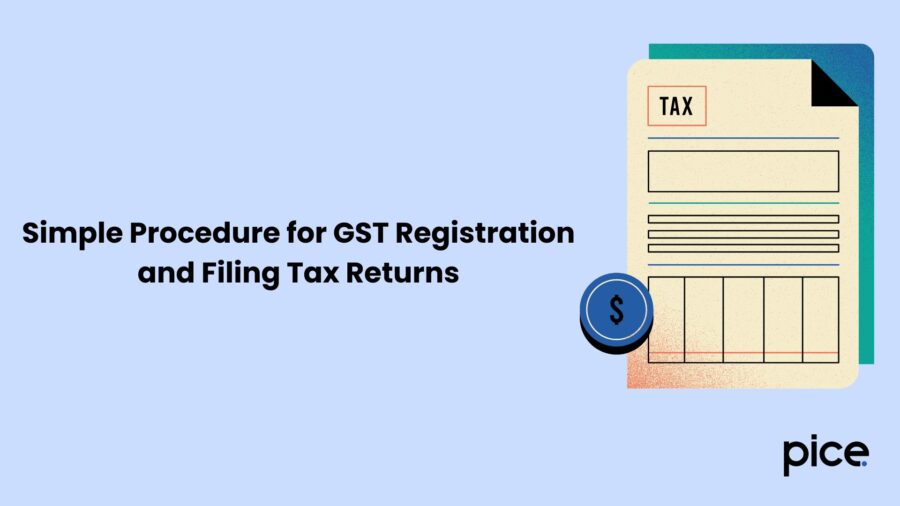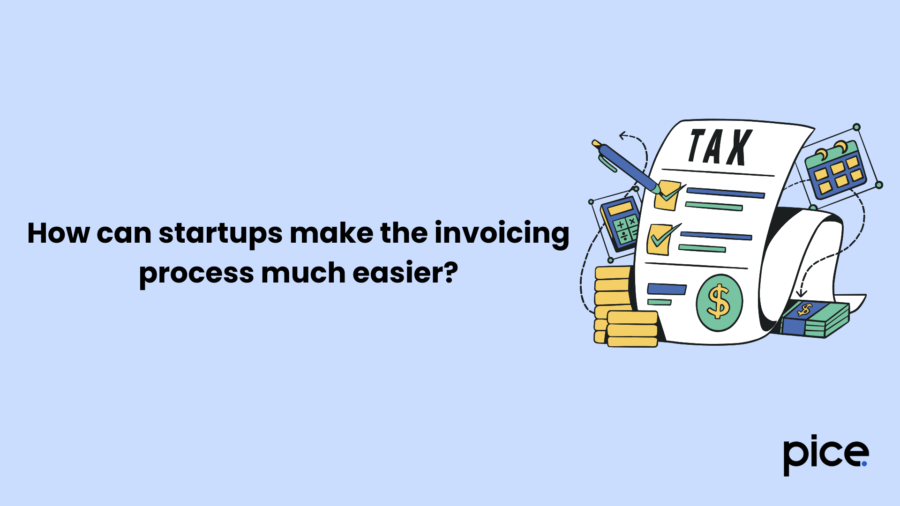Top Benefits of GST for Small Businesses
- 25 Jun 25
- 10 mins

Top Benefits of GST for Small Businesses
- GST For Small Business
- How GST Helps Startups and Small Businesses?
- The Impact of GST on Small Businesses & Startups
- Simple Procedure for GST Registration and Filing Tax Returns
- Offences and Penalties under GST for Evading the New GST Rules
- How can startups make the invoicing process much easier?
- Conclusion
Key Takeaways
- GST Registration Thresholds: ₹40L for normal states, ₹20L for special category; up to ₹1.5Cr under the Composition Scheme.
- Simplified Tax Structure: GST unifies multiple taxes, easing compliance and creating a national market.
- Input Tax Credit: Businesses can offset GST on purchases, reducing overall tax burden.
- Online Processes: Easy digital registration, return filing, and payments streamline operations.
- Strict Penalties: Non-compliance can lead to heavy fines or imprisonment—accurate filing is essential.
Planning tax regulations is a crucial step for any small business aiming for sustainable growth in India. The introduction of the Goods and Services Tax (GST) has transformed the way small businesses operate by simplifying the indirect tax structure and creating a unified national market.
However, understanding GST registration requirements, especially the minimum turnover limits, eligibility criteria, and compliance obligations, is essential for business owners to avoid penalties and take advantage of tax benefits. This article offers a comprehensive guide to GST registration for small businesses, covering the latest turnover thresholds, new rules under the GST regime, and the benefits of registration.
Read this blog to understand the benefits of GST for small business and other related aspects for the same.
GST For Small Business

Under the provisions of the updated GST law, businesses are required to register for GST based on their annual turnover. For businesses operating in normal category states, the threshold limit is ₹40 lakhs, while for those in special category states, it is ₹20 lakhs. However, small businesses that opt for the Composition Scheme under Section 10 of the CGST Act can benefit from a higher threshold limit of up to ₹1.5 crores, subject to specific conditions.
Additionally, entities such as Input Service Distributors (ISDs), casual taxable persons, non-resident taxable persons, and agents of suppliers are also required to obtain GST registration regardless of turnover.
Moreover, the introduction of GST has played a pivotal role in simplifying the tax landscape for Micro, Small, and Medium Enterprises (MSMEs) across India. Here are some key benefits observed:
- Encouragement to Entrepreneurs: GST has made the tax credit mechanism simpler, encouraging more individuals to start and scale businesses.
- Market Integration: By subsuming various state and central taxes, GST has created a unified national market.
- Reduced Tax Burden: Businesses now deal with a single tax structure, which has significantly lowered the overall tax liability for manufacturers.
- Value Addition at Every Stage: GST follows a value-based tax system, allowing manufacturers, wholesalers, distributors, and retailers to claim input tax credit at every stage of the supply chain, promoting transparency and efficiency.
How GST Helps Startups and Small Businesses?
The “one nation, one tax” regime of GST has created a transparent environment for small businesses and startups. Questions related to the threshold limit, input tax credit, tax invoices, and accounting linger in the minds of these business owners.
The following section will talk about how GST has helped both small businesses and startups:
- Pre-GST Example of VAT
In the pre-GST era, startups and small businesses were bound to pay taxes to the Government. The VAT amount paid during business purchases raised a significant concern since it remained unutilised. No one could claim that credit since it fell under service tax liability.
For example, a startup paid a 5% tax on supplies worth Rs. 50,000. The same startup offered services to another company and charged Rs. 90,000 with a 15% service tax.
Let us see the total indirect tax amount paid in this context:
Service Tax (90,000 *15%) = Rs. 13,500
Vat paid on purchasing product (50,000 *5%) = Rs. 2500
Therefore, the total indirect tax amount: (13,500 + 2500) = Rs. 16,000
2.Post-GST Example of Tax Credit on Purchases
As part of the benefits of GST for small businesses, there is an opportunity to set off the tax amount invested for business-related purchasing. So, if a startup purchases Rs.50,000 where GST of 12% is levied and offers services to another company worth Rs. 90,000 with 18% GST, here is how the startup will benefit from the credit on taxes:
GST on Services (90,000 *18%) = 16,200
GST on purchasing products (50,000 * 12%) = 6,000
So, the net GST amount to be paid will be (16,200 - 6,000) = Rs. 10,200
In the post-GST era, the benefits of GST for small businesses have led to approximately 42% export revenues and 50% industrial output in the service sector. This is more than IT, the top employment-generating sector.
The Impact of GST on Small Businesses & Startups

According to the current GST act, the threshold for annual turnover for a small business is Rs. 20 Lakhs. In fact, with a special composition scheme, these businesses can lower their tax amount further. Lets now highlight some of the benefits of GST for small businesses:
- Centralised Registration to Omit Bureaucratic Intricacy
Sometimes, political and socioeconomic barriers become obstacles, leading to the wastage of money, resources, and time for small businesses. Before GST, there were multiple taxes on exporting and importing goods from the place of manufacturing to the place of consumption.
Now, after GST, one centralised registration has reduced the burden on businesses operating smoothly. So, small businesses do not need to maintain multiple warehouses or face delays during product movement. This has led to speedier product delivery and customer satisfaction, eliminating tolls, border inspections, and check posts.
- Decreased Tax Burden for manufacturing startups
The unified tax structure of GST has replaced multiple indirect taxes and, therefore, helped decrease the cascading effects of indirect taxes. These GST advantages have helped manufacturing startups achieve business success. This has reduced the burden of paperwork and streamlined financial obligations.
Although the benefits of GST for small businesses and startups are remarkable, there are some hurdles. Earlier, the excise laws required startups to pay an excise duty when their business turnover crossed Rs.1.50 crores. In the GST era, the amount has come down to Rs. 20 Lakhs. Manufacturing businesses, therefore, face many challenges while adjusting to the new regime.
- Reduction in Compliance Cost for Businesses
The transparent tax system has made understanding tax compliance simpler for small businesses. Small businesses do not have to deal with a heavy tax burden and filing complexities.
The online GST portal is user-friendly, making the online filing and payment processes seamless. Thus, businesses do not have to worry about facing penalties or any legal obstacles.
- Ease of Doing Business with Single Registration
The overall GST process, from registration to payments and return filing, is available online. So, small business owners do not have to run around different tax offices for registration. In addition, they save a lot on extra investment in resources.
Simple Procedure for GST Registration and Filing Tax Returns

Registering under GST to reap benefits is a simple process that small businesses must follow. This will help them stay compliant with the law and operate seamlessly across state borders.
Here is a step-by-step guide on how small businesses can register for GST online:
Step 1: First, go to the GST portal (https://www.gst.gov.in/).
Step 2: Create an account by entering the basic details of your PAN, email ID, and phone number.
Step 3: Fill in the correct business details, such as trade name, bank account details, and business address.
Step 4: After the verification, you will receive a GSTIN, a unique 15-digit number for your business.
Move forward to tremendous business success with this streamlined registration process and increase your business credibility.
Offences and Penalties under GST for Evading the New GST Rules
If a small business or startup tries to evade the new GST rules, it faces a number of offences and penalties.
According to CGST Section 122 (1), major GST offences are:
- Not registering under GST even though the business owner is a taxable person engaged in trading and commerce.
- Fill in the GST registration form with false information.
- Deliberately suppressing the annual turnover amount to evade tax payments.
- Supplying products without a correctly filled invoice.
- Claiming for ITC even though the business has not received any good and service.
- False invoices do not involve actual goods and services.
If any of these offences take place, small businesses are liable to penalties as follows:
- In terms of not filing GST returns (GSTR -3B), companies need to pay Rs. 20 per day per act (CGST +SGST) until the delayed period.
- GSTR -3B late filing will account for Rs. 100 per day per act. Along with the late fee, businesses have to pay an interest amount of 18%.
- When an offender does not pay pax or makes short payments with the hope of tax evasion, a 10% tax amount (minimum penalty of Rs. 10,000) must be paid.
- Fraudulent activity or tax evasion might lead to a 100% penalty, a fine, and imprisonment of up to 1 to 5 years.
- Joint Commissioners of CGST or SGST have full authority to inspect and seize business property if a business owner is trying to evade tax.
How can startups make the invoicing process much easier?

Following is a way how startups can make the invoicing process easier:
- Use cloud-based invoicing software like Zoho Invoice, QuickBooks, or FreshBooks to automate invoice creation, tracking, and reminders.
- Business owners must ensure invoices are GST-compliant, including all mandatory details like GSTIN, HSN/SAC codes, and tax breakdowns.
- Create standardised invoice templates with clear payment terms, due dates, and client information to reduce errors and maintain consistency.
- Set up automated recurring invoices for regular customers to save time and improve cash flow.Integrate invoicing tools with accounting and inventory management systems to streamline data and financial records.
- Offer multiple digital payment options (UPI, credit/debit cards, net banking) to make it easier for clients to pay on real time basis.
- Service providers must define a clear invoicing policy that includes payment timelines, late fees, and dispute resolution procedures.
- Regularly reconcile invoices and payments to avoid mismatches and ensure accurate bookkeeping.
- Keep digital backups of all invoices for compliance and audit readiness.
- By adopting digital tools and clear processes, startups can make invoicing more efficient, professional, and less time-consuming.
Conclusion
GST registration has become a vital step for small businesses and startups in India to ensure legal compliance, streamline operations, and gain access to input tax credits. With simplified procedures, a unified tax regime, and digital tools, GST has reduced the tax burden and improved ease of doing business.
By understanding the minimum turnover limits, benefits, and compliance requirements, small business owners can make informed decisions that foster growth, transparency, and long-term success in a competitive market.
💡If you want to streamline your invoices and make payments via credit or debit card or UPI, consider using the PICE App. Explore the PICE App today and take your business to new heights.


















